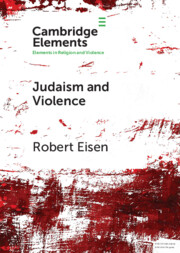Element contents
Judaism and Violence
Published online by Cambridge University Press: 02 September 2021
Summary
- Type
- Element
- Information
- Online ISBN: 9781108935388Publisher: Cambridge University PressPrint publication: 07 October 2021
References
- 6
- Cited by



